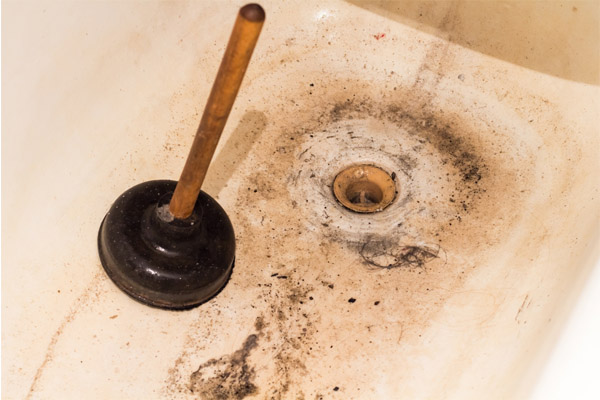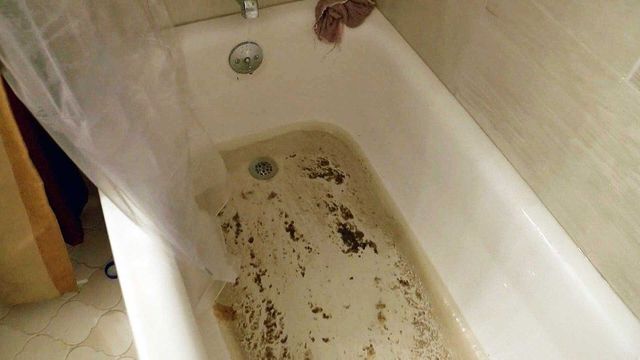Best Reasons Behind Discharge Backflow in the Bathtub
Best Reasons Behind Discharge Backflow in the Bathtub
Blog Article
How do you really feel on the subject of Why is Sewage Backing Up Into My Bathtub??

Sewer backup in the tub can be a traumatic and unhygienic problem for any type of home owner. Not just is it inconvenient, yet it also presents serious health risks and shows underlying problems with the plumbing system. Comprehending why sewage is showing up via the bathtub is important for taking ideal action to address the trouble properly.
Introduction to the Concern
Comprehending the Problem
When sewer starts backing up into the bath tub, it's a clear indicator of a problem with the drain system. The wastewater that needs to be streaming far from your home is rather finding its way back right into your space, which can lead to significant damages and carcinogen.
Potential Causes
A number of elements can contribute to sewage backup in the bathtub. From obstructions in the sewage system line to problems with the plumbing framework, recognizing the source is essential for locating an option.
Usual Factors for Sewage Back-up
Blockages in the Sewage System Line
One of the most usual reasons for sewer backup is an obstruction in the sewer line. This can happen due to the build-up of debris, grease, or international items in the pipes, protecting against appropriate circulation and creating sewer to support into your tub.
Tree Root Invasion
Tree roots seeking wetness and nutrients can infiltrate sewer lines through small splits or joints. In time, these origins can expand and broaden, creating significant damage to the pipelines and causing sewage back-up problems.
Aging Infrastructure
Older homes may have obsoleted plumbing systems that are a lot more prone to deterioration, cracks, and degeneration. As pipelines age, they end up being more vulnerable to leaks and obstructions, raising the chance of sewer back-up events.
Heavy Rainfall or Flooding
Throughout periods of heavy rainfall or flooding, the sewer system might become overloaded with excess water, creating back-ups and overflows. This can result in sewage backing up into tubs and various other components inside the home.
Health Risks Related To Sewer Back-up
Contamination of Supply Of Water
Sewage backup can contaminate the water system in your home, presenting a significant wellness danger to you and your family members. Exposure to polluted water can bring about intestinal issues, skin infections, and various other ailments.
Spread of Condition
Sewer contains dangerous microorganisms, viruses, and bloodsuckers that can cause a range of illness, including hepatitis, cholera, and gastroenteritis. Entering into contact with sewer or contaminated surface areas places you at risk of infection.
Mold Development
Moisture from sewer back-up can produce excellent conditions for mold and mildew growth in your house. Mold and mildew spores can worsen respiratory troubles and create allergic reactions in sensitive individuals, making prompt cleanup vital.
Indicators of Sewage Back-up
Foul Odors
Unpleasant smells originating from drains pipes or fixtures, specifically in the shower room, may suggest sewage backup problems. These smells are commonly strong and persistent, signaling a problem that needs instant attention.
Slow Draining Fixtures
Tubs, sinks, and commodes that drain pipes gradually or otherwise whatsoever could be experiencing sewage backup. If several fixtures are affected concurrently, it's most likely that the problem originates from a common point, such as the major sewage system line.
Gurgling Sounds
Odd gurgling or bubbling sounds originating from drains pipes when water is running somewhere else in the house are a measure of air caught in the plumbing system. This air accumulation can arise from sewer backup and ought to be checked out quickly.
Immediate Actions to Take
Turning Off Water
In the event of sewage back-up, it's essential to shut off the supply of water to prevent additional contamination and damages. Find the major water shutoff valve in your house and shut it off up until the problem can be settled.
Contacting an Expert Plumber
Taking care of sewage backup is not a do it yourself job. Call a certified plumber with experience in managing sewage-related concerns to assess the situation and execute necessary repairs or cleanups.
Avoiding Contact with Contaminated Water
Till the sewer back-up is fixed, avoid contact with contaminated water to avoid the spread of germs and virus. Use safety equipment if you have to be in the afflicted area and clean your hands completely afterward.
Preventive Measures
Normal Upkeep of Sewer Lines
Set up normal inspections and upkeep of your drain lines to recognize and attend to possible issues prior to they rise into significant troubles. This can include cleaning out particles, evaluating for tree origin breach, and fixing any type of broken pipelines.
Setting Up Backwater Shutoffs
Take into consideration installing backwater valves in your plumbing system to prevent sewage from receding right into your home throughout periods of heavy rainfall or flooding. These valves instantly close when water starts backing up, shielding your residential property from contamination.
Appropriate Disposal of Household Waste
Prevent flushing anything apart from toilet paper website and human waste down the bathroom to prevent obstructions and clogs in the sewer line. Dispose of grease, oil, and other family chemicals properly to lessen the danger of plumbing issues.
Tidying up After Sewage Back-up
Disinfection Procedures
Extensively decontaminate and sterilize impacted areas after sewage backup to get rid of unsafe bacteria and prevent mold and mildew growth. Use suitable cleansing products and protective gear to make certain safe and effective clean-up.
Restoration of Affected Areas
Repair any damage to flooring, walls, or fixtures brought on by sewage back-up. Relying on the extent of the damage, you may need to change carpeting, drywall, or other products to recover your home to its pre-loss problem.
Why Is Water Backing Up in My Bathtub When I Flush My Toilet?
What to do about a sewer line clog
First, don’t bother with plunging. No amount of plunging will dislodge the clog in a sewer line. The clog is too far away. Plungers are for clogs in the toilet itself, not the sewer line. Plus, the most likely causes of a sewer clog are:
Tree roots Flushed toys or feminine products Grease buildup Those items don’t move easily. And in the case of tree roots, the roots need to be cut out of the pipe and the pipe will need to be repaired.
You’ll need a closet auger. A closet auger is a type of plumber’s snake with a protective cover to keep from scratching the delicate porcelain toilet. If the clog is further down, you may need to remove the toilet or use one of your cleanouts to get to the clog.
We also recommend doing a video inspection of the drain to ensure that the cause of the clog has been completely removed. Otherwise, you could have the same problem again in a few days or weeks.
https://mspplumbingheatingair.com/blog/why-is-water-backing-up-in-my-bathtub-when-i-flush-my-toilet

I'm just very serious about and I hope you liked the piece. Kindly take the time to distribute this article if you liked it. Thank you so much for your time invested reading it.
Call Today
Report this page